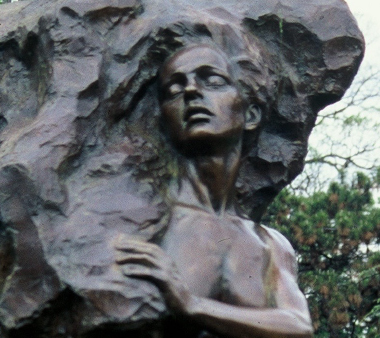
In sculpture we refer to that mysterious, elusive quality we most want in our work as the “poetry.” It would seem only fair then, to refer to those non-poetic qualities of poetry as “sculptural.” By this I mean those elements of craft and form common to both. We focus on the armature, proportion, rhythm, and the location of bony landmarks in the studio; do we not focus on these at the writer’s slope, as well?
Consider this description:
Whether you measure in feet or meters, the distances between A’s and B’s should be constant. Each line should have a corresponding, balancing line. The tone and vocabulary should be consistent throughout. The form can be divided into halves, thirds, twelfths, etc. There are echoes of each statement throughout the work. The weight of the form will imply its tone.
What is being described here, poetry or sculpture? Actually, all formal art could be described this way, music, painting, architecture, macramé, everything.
When Keats waxed odic over a Grecian Urn, he beautifully described the outer form, its symmetry, and the decorations found there. He referred to its pristine condition as bridal. He does not, however, tip the jar to his ear and delve the dark noises held within: the briny ocean’s soft roar, the skittering echo of the crustacean’s piked feet, the oracle’s cryptic whispers. But that, too, is a potent journey, one from the formal to the mystical, and that is the struggle in the too, too-solid medium of sculpture, as well.
“Heard melodies are sweet, but those unheard
Are sweeter; therefore, ye soft pipes, play on . . .” Keats
